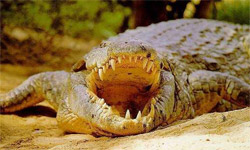Greenland shark, the longest-living vertebrate on Earth. How scientists estimate its age, its slow metabolism, Arctic habitat, and conservation challenges.
🦈 Greenland Shark (Somniosus microcephalus) is one of the most mysterious creatures of the deep ocean. Known for its enormous size and sluggish movement, this Arctic predator holds an incredible record: it is the longest-living vertebrate on Earth. Some individuals are believed to be more than 500 years old, making them older than the United States itself. But how do scientists determine the age of an animal that has no bones, no fin spines, and grows at an almost imperceptible rate?
Why the Greenland Shark’s Age Was a Mystery
Most sharks can be aged by examining growth bands in their vertebrae or fin spines — similar to counting rings on a tree. But Greenland sharks lack these hard structures:
- No fin spines
- Soft vertebrae that don’t form rings
- Extremely slow growth (less than 1 cm per year)
Given that adults can reach over 6 meters (20 feet), scientists suspected Greenland sharks lived for centuries, but they had no method to confirm it.
How Scientists Discovered Their Age
The breakthrough came with carbon dating. Researchers discovered that proteins in the shark’s eye lens are formed before birth and remain stable throughout life. By analyzing these proteins, scientists could estimate the shark’s age with surprising accuracy.
A landmark study examined several Greenland sharks caught as bycatch:
- The largest specimen, a 5-meter female, was estimated to be between 272 and 512 years old.
- Even the lowest estimate (272 years) made this shark the longest-lived vertebrate ever recorded.
The Secret to Longevity: A Slow Metabolism
One explanation for the Greenland shark’s incredible lifespan is its extremely slow metabolism. Living in the icy waters of the Arctic and North Atlantic, the shark has adapted to:
- Cold temperatures: Survives in waters close to freezing year-round.
- Deep dives: Found as deep as 2,200 meters (7,200 feet).
- Slow movement: Top swimming speed is less than 2.9 km/h (1.8 mph).
- Delayed maturity: Believed to reach sexual maturity after 100–150 years.
This slow pace of life may reduce cellular damage, allowing the shark to live for centuries.
Ecological Importance
Because Greenland sharks reproduce so slowly, their populations are highly vulnerable:
- Removing a single mature individual can impact the ecosystem for decades.
- They are apex predators, feeding on fish, seals, and sometimes scavenging large carcasses.
- Historically hunted for liver oil, they are now mostly caught accidentally in fishing gear.
Protecting this species is essential, not only because of its rarity but also because it plays a key role in the Arctic marine food web.
Conservation Challenges
Today, Greenland sharks face threats from:
- Bycatch: Accidental capture in commercial fishing gear.
- Climate change: Warming oceans may alter their habitat.
- Pollution: As long-lived predators, they accumulate toxins in their tissues.
Conservation efforts focus on:
- Reducing bycatch through new fishing techniques.
- Protecting Arctic habitats from industrial expansion.
- Increasing scientific research to better understand their biology.
Greenland Shark Fast Facts
- Scientific name: Somniosus microcephalus
- Habitat: Arctic and North Atlantic Oceans
- Size: Up to 7 meters (23 feet) long
- Weight: Up to 1,200 kg (2,600 lbs)
- Speed: Less than 2.9 km/h (1.8 mph)
- Lifespan: Estimated 272–512 years
- Deepest dive recorded: 2,200 meters (7,200 feet)

The Greenland shark is a living time capsule, carrying centuries of history beneath the waves. Its extraordinary lifespan, slow growth, and deep Arctic habitat make it one of the most remarkable species on Earth. But with threats like bycatch and climate change looming, conservation efforts are essential to ensure that these ancient giants of the sea continue to swim our oceans for centuries more.









